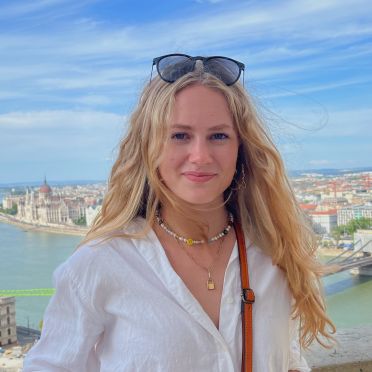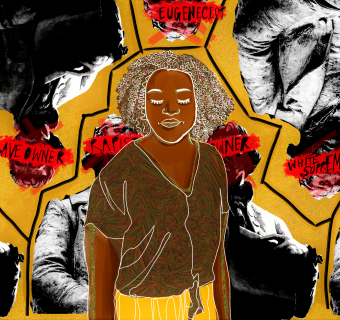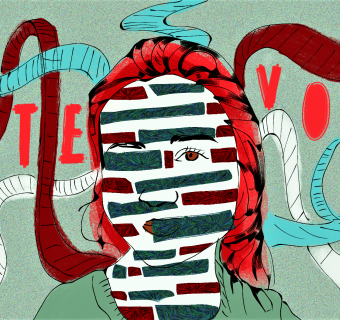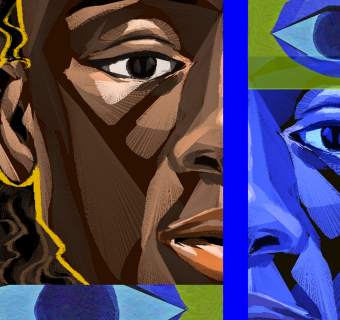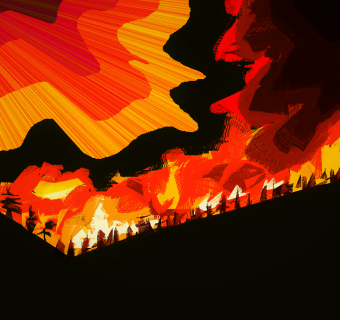On a recent Saturday morning, I was bursting out of the dimly lit Paramount Theater in Downtown Charlottesville with furrowed brows and a long stride. Inside, another panel of high powered political elites prepared to entrance an audience of what seemed to be mostly local elderly people.
Somewhere, at 11am, a college student rolled over groaning, hungover. My head, similarly, throbbed. That morning I wasn't sure I could take another hour of platitudes and ‘discussion’ about the importance of “shared values” in saving American democracy.
I needed a break.
Over the three sprawling days of the University of Virginia’s “Democracy 360” event, I heard an author speak on the labor abuses of migrant guest workers in Texas and Mississippi. I heard Jim Ryan moderate a dialogue about rectifying our nation's disastrous civic education model. I heard about the identity politics behind our construction of the literary canon, and the oncoming storm of climate-related migration, and musings on whether or not “unbiased” media is an oxymoron. The breadth of new knowledge was head-spinning—but the efficacy of each event varied.
This was democracy in action.
For someone excited at the prospect of ‘doing’ politics with the Big Kids, I found the events worked best in small settings. When presenters were sitting on a stage that was, functionally, just the front of a room, information (literally) became easily accessible. When the panel structure morphed into a Socratic conversation, in brightly lit rooms where the speakers could see me when I asked my questions, I felt I learned in a participatory way. It felt significant to look the speakers in the eye, to create a dialogue between the experts and the commoners with political gumption. This was democracy in action.
So I remained suspicious of the “main stage” keynote events that seemed detached from the very people they were trying to get invested in political dialogue. Their physical setup kept elite speakers trapped within the boundaries of the “expert panel.” As someone with a theater background, I know the ‘hot’ lights of the stage often blind the performer from their audience. Members’ questions for the speakers were not presented directly, but instead came from chosen students who ‘curated’ the submissions. To even get your question on the chopping block, you filled out a QR code projected on an overhead screen–-no dialogue required!
Watching the performances of Virginia’s current Secretary of Education, the former Houston mayor, and Jim Ryan himself, I felt like nothing more than a voyeur.
Why don’t we have a panel where a city council member from my parents’ hometown of Thomaston, Georgia—population: 9,000—speaks to a queer activist here at UVA?
Ironically, the main stage speakers encouraged conversations between citizens that may “lack similarities” to create “shared values” between our increasingly polarized polity. But when the largest difference between the panelists is whether they report for PBS Newshour or Fox News, or which political think tank they lead, is a conversation about “uniting the polarized” not somewhat in vain?
Why don’t we have a panel where a city council member from my parents’ hometown of Thomaston, Georgia—population: 9,000—speaks to a queer activist here at UVA? They are the ones who need to find common ground. To “save” democracy, we need to facilitate conversations between the voters, the teachers, and the local leaders doing the saving. Only then, Karsh Institute, could the event have been truly “360.”
In a time when, apparently, we desperately need people to talk to one another, when we want our citizens to become active participants in democracy as opposed to passive observers of its slow dissolution, it felt cringe-worthy that the keynote events were mere spectacles as opposed to something participatory. And it was more disheartening that Karsh chose panels of the same kinds of pundits we always see on television, doing the same old political song and dance, as opposed to creating real difference between the speakers, so our panels might more accurately reflect the everyday rooms we walk into.
Not 50 feet from an event about the importance of everyone investing in democracy, one where the audience’s average age is over 50 and almost everyone is white, I saw people of all ages, races, and classes watching a demonstration of culture with smiles and laughter.
Bursting out of the dimly-lit Paramount Theater into the sunlight, I started to walk downtown. Not 50 feet from the theater, a demonstration of a kind of Eastern European traditional dance took up most of the square. Men of all ages were dancing in the street, the youngest being no older than eight, and his dance moves were noticeably less crisp. The audience clapped for him the loudest.
Not 50 feet from an event about the importance of everyone investing in democracy, one where the audience’s average age is over 50 and almost everyone is white, I saw people of all ages, races, and classes watching a demonstration of culture with smiles and laughter. How do we bring all of these people into the theater? Or should everyone in the theater, if we’re trying to have a conversation about “democracy in action,” be coming out here instead?

